Research Strategy
1.Organization
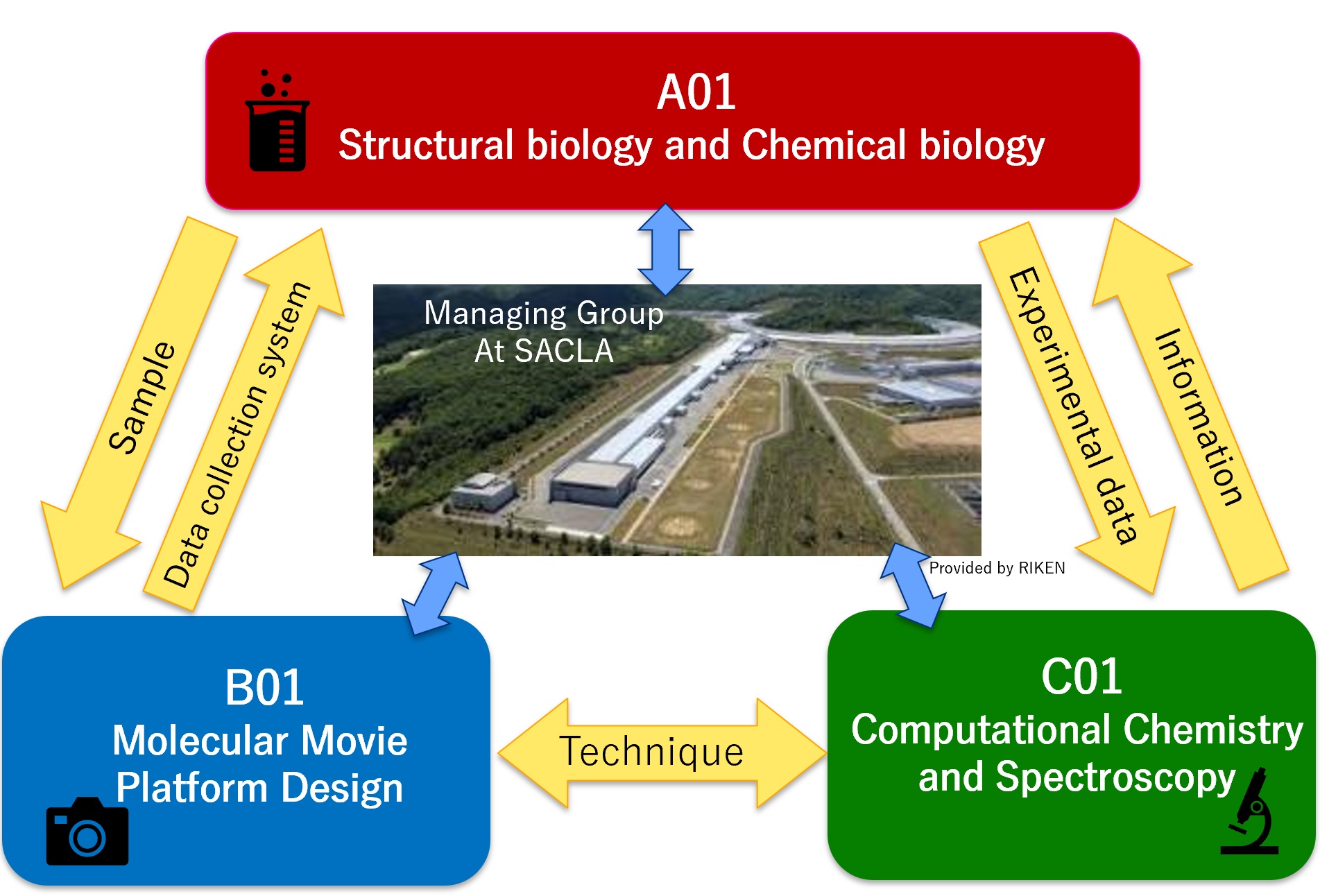
We mainly conduct experiment on SACLA-base. We have formed three research elements Structural biology and Chemical biology (A01), Molecular Movie Platform Design (B01) and Computational Chemistry and Spectroscopy (C01).
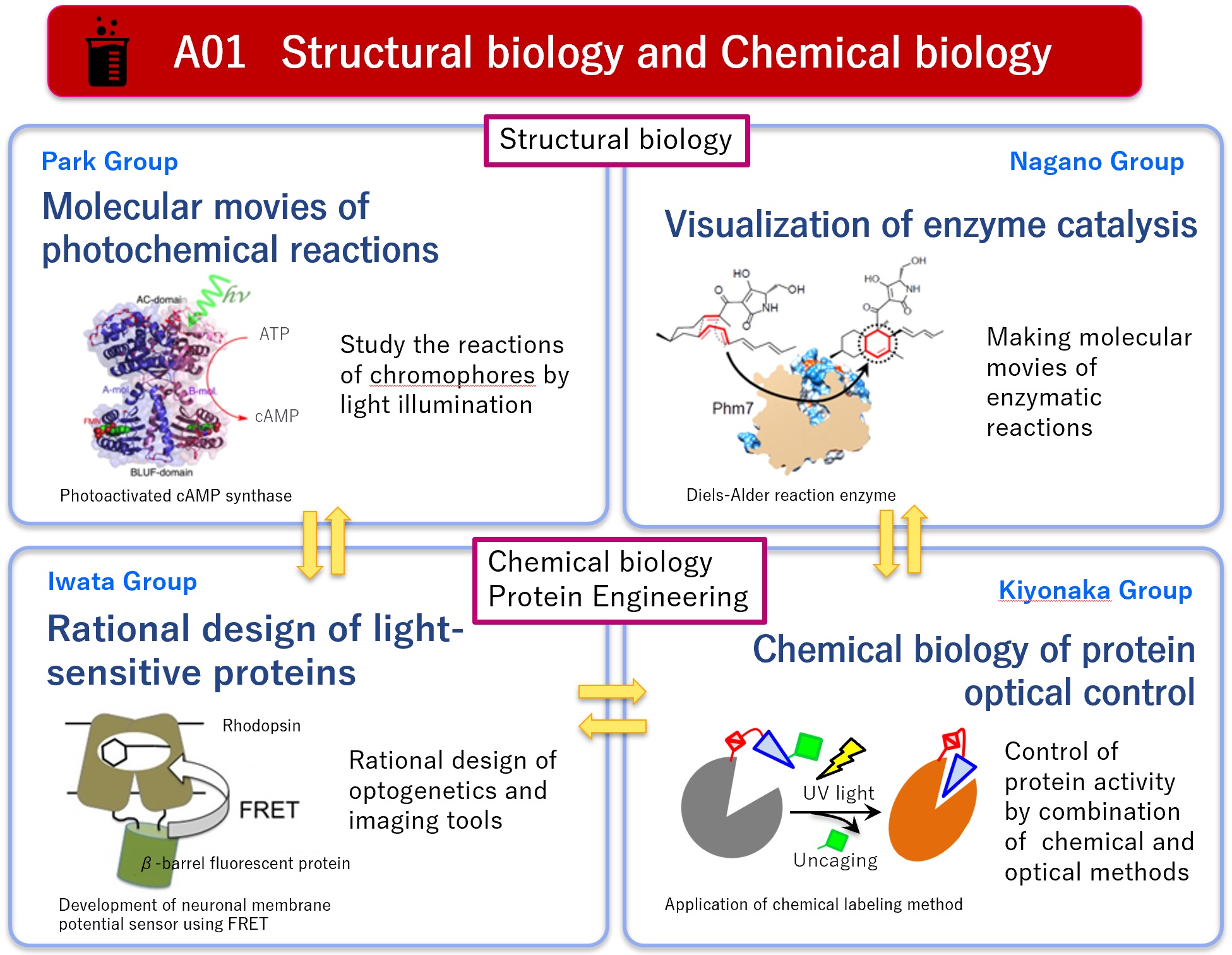
A01 has four groups. Park Group study the dynamic structure of proteins that react to light. Nagano Group study the dynamic structure of enzyme catalysis. We support their research with Iwata Group’s protein engineering and Kiyonaka Group’s chemical biology. We will expand the applicable range of the Molecular Movies method and develop new functional molecules using the results.
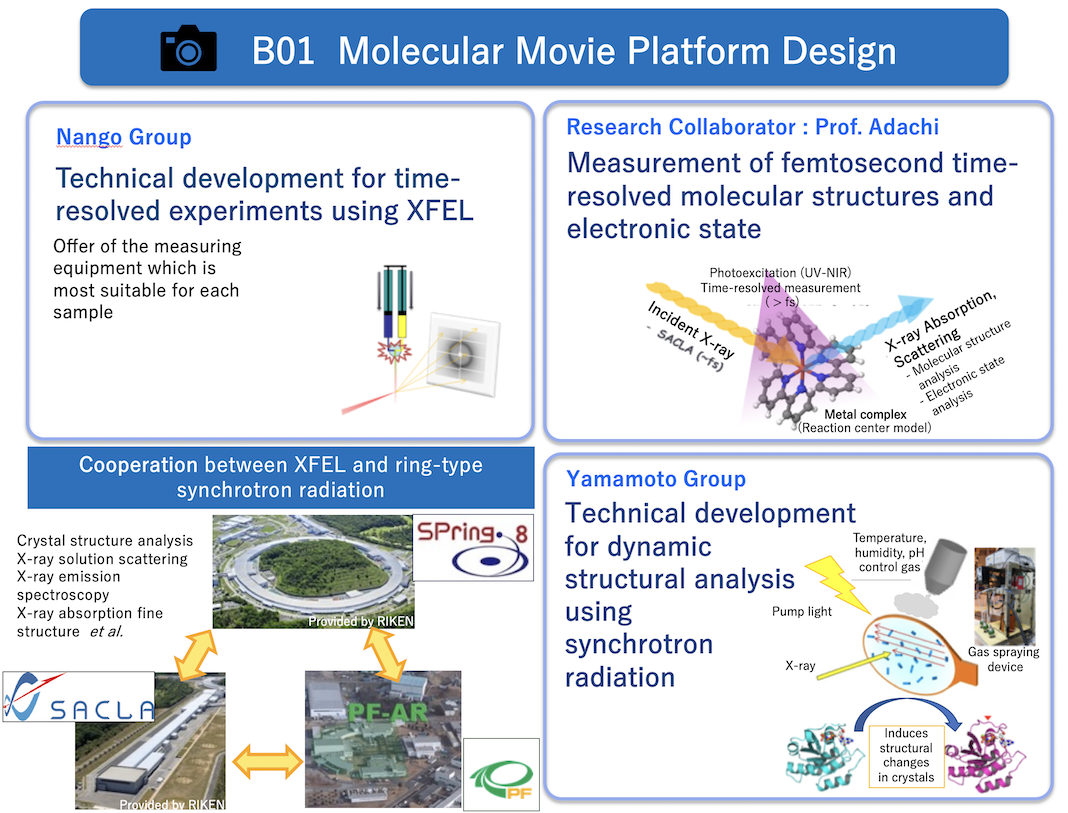
B01 is the core group. SACLA, SPring-8, and PF will cooperate. Nango Group will develop a new synchronization method and a sample introduction method suitable for it at SACLA. The Yamamoto Group plans to conduct a complementary experiment with the program in SACLA by conducting high-precision structural analysis at SPring-8. And, the Adachi Group (research collaborator) measures time-resolved of small molecules such as metal complexes and feeds back to the analysis of biomolecules in SACLA.
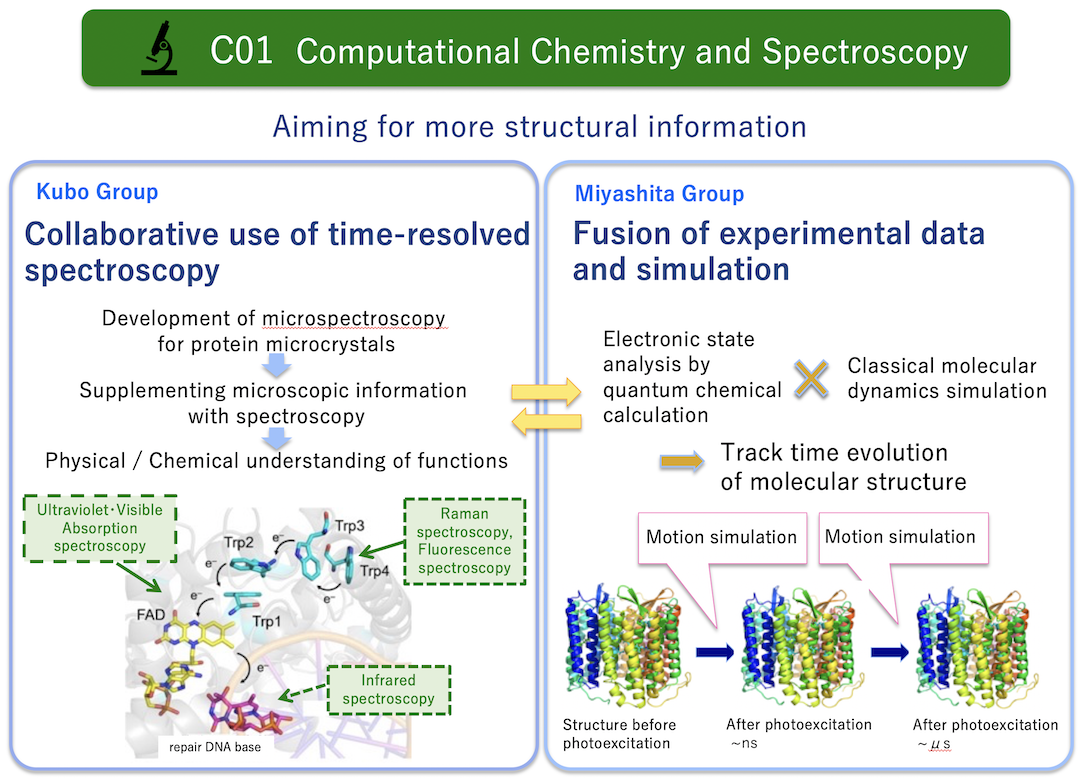
C01 is the Kubo Group and the Miyashita Group. The Kubo Group has an important role in determining the time range for taking molecular movies by examining exactly when changes occur in crystals. The Miyashita Group performs quantitative and theoretical analysis of observed experimental results by using molecular dynamics simulations for large structural changes and quantum chemical calculations for fast structural changes. These results will also be used for the development of new functional substances.
2.Networking
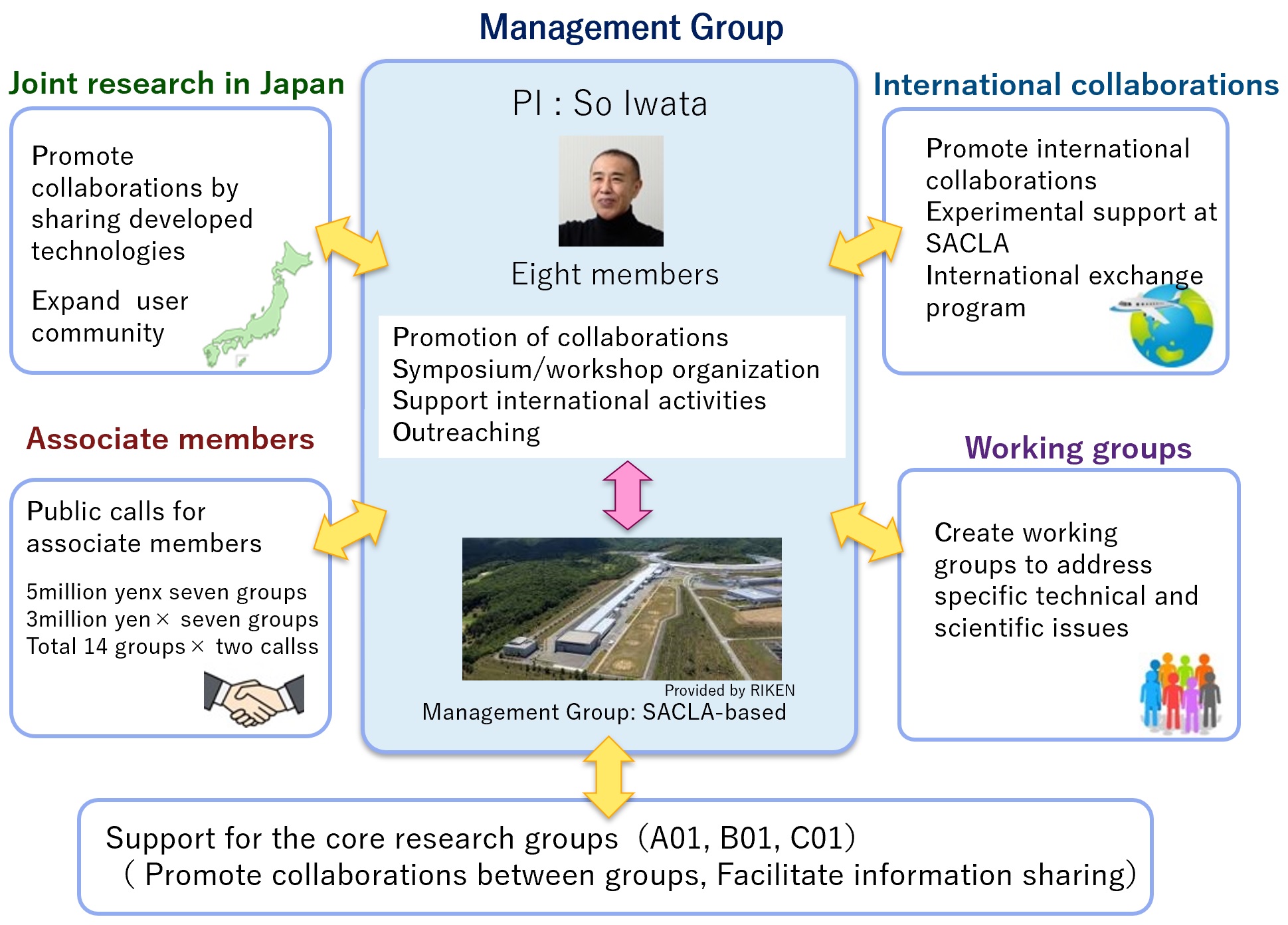
We will form a community that uses the molecular movies method by revitalizing the administrative group, specialized working groups, publicly offered researches and domestic/international collaborations centering on SACLA. For this purpose, we will actively hold symposiums and disseminate information.
3. Schedule
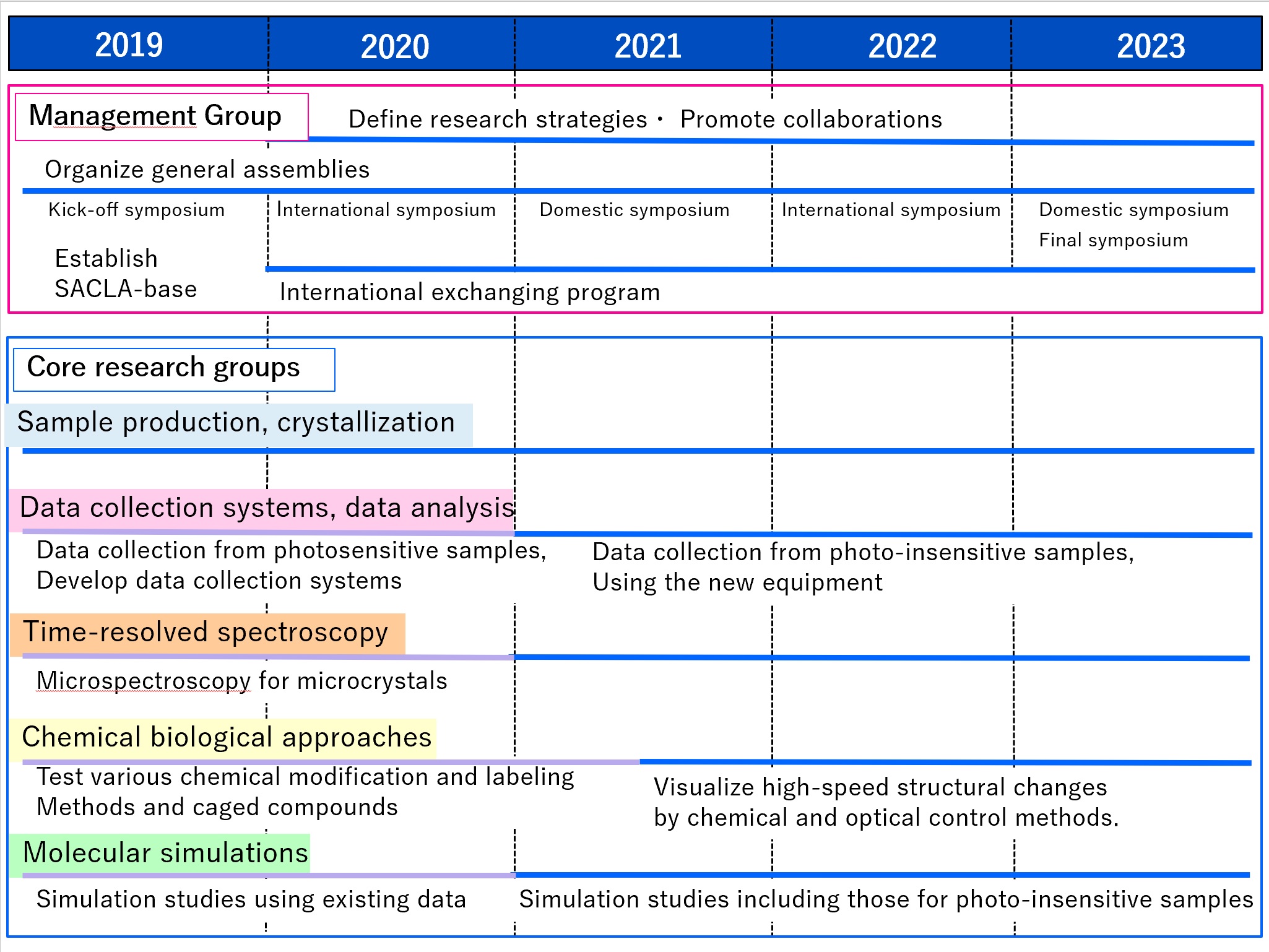
Basically, we will continue development and research for 5 years. We will focus on the development of the underlying technology by the second year. In the second half, we plan to proceed with applied research using this. We plan to invite publicly offered researches twice in the second and fourth years.

